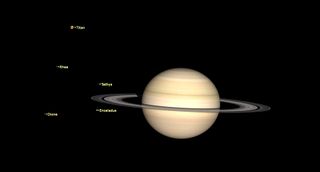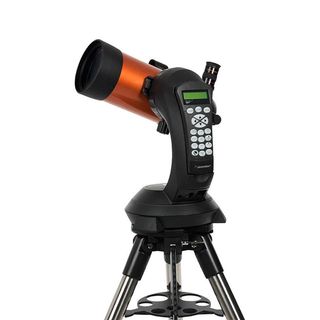If your household is like most American families, then on Thursday you likely will all be sitting down with family and friends to a traditional Thanksgiving turkey dinner during the mid-to-late afternoon hours. Then as darkness falls, some will probably migrate into the living room to catch some football or other holiday fare on television.
But if you have a large gathering of family and friends at your home – and if your skies are mainly clear – why not invite everyone outside to gaze at the evening sky? If you have binoculars, or better yet, a telescope, you just might end up turning this into a memorable family tradition of its own.
Throughout the summer and into early fall we were starving for a view of bright and accessible planets. But now, at Thanksgiving time, we have a feast. There are no fewer than three bright planets shining prominently during the early evening hours: Saturn, Jupiter and Venus.
Three bright planets
TOP TELESCOPE PICK:
Want to see Venus, Jupiter or Saturn up close? The Celestron NexStar 4SE is ideal for beginners wanting quality, reliable and quick views of celestial objects. For a more in-depth look at our Celestron NexStar 4SE review.
As darkness falls, Jupiter, nearing its biggest and brightest for 2024 rises north of due east and remains on display virtually all night long.
Even more brilliant, on the opposite side of the sky, is Venus, which gets higher each night and remains visible in the southwest for up to three hours after sunset by the end of November.
Also in excellent position is Saturn, shining with a sedate, yellow-white glow and at nightfall appears roughly midway between the other two planets, about two-fifths up in the south-southwest sky.
Venus is the first to come into view in the southwest right around sunset. During November this lustrous Evening Star has made a significant climb for observers at mid-northern latitudes. A telescope shows the dazzling disk of Venus about three-quarters illuminated and it is still rather small.
Although Venus is brighter, Saturn and Jupiter in every other way are superior to Venus for observers. With a telescope magnifying 30-power, the famous rings of Saturn begin to be visible. If you have a 4-inch telescope, a 100-power eyepiece will readily bring Saturn’s rings into view; always a delight for first-timers who have never seen the rings for themselves.

Click Here to Read the Full Original Article at Space…

